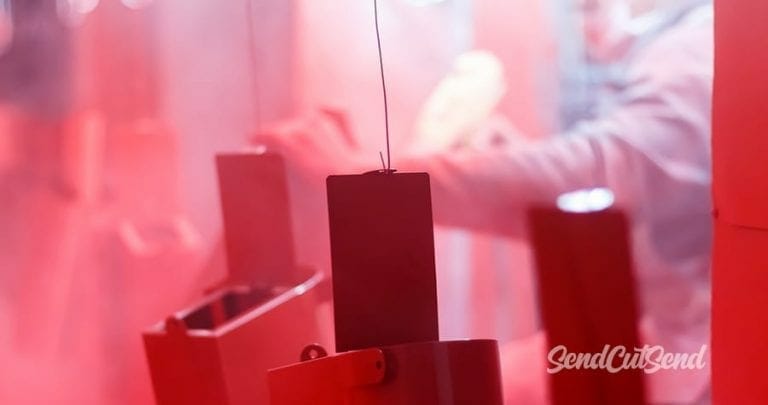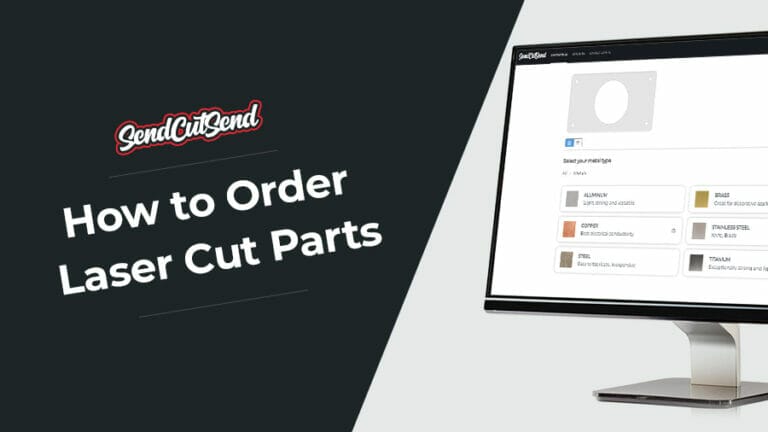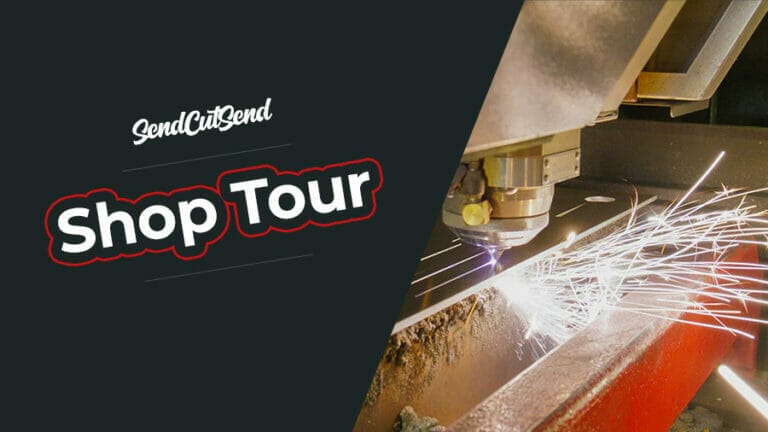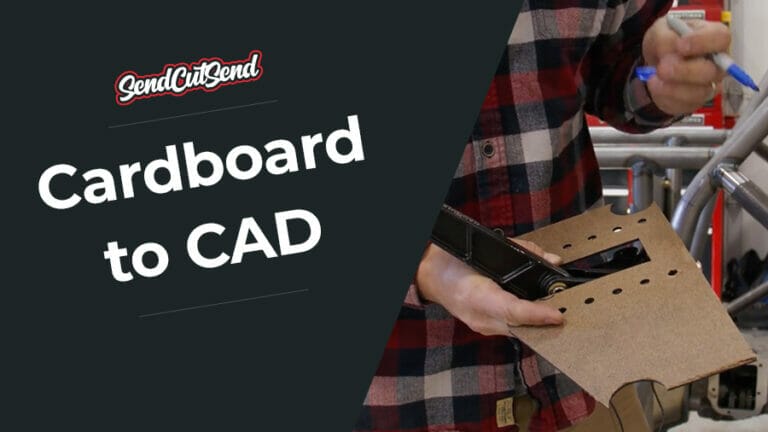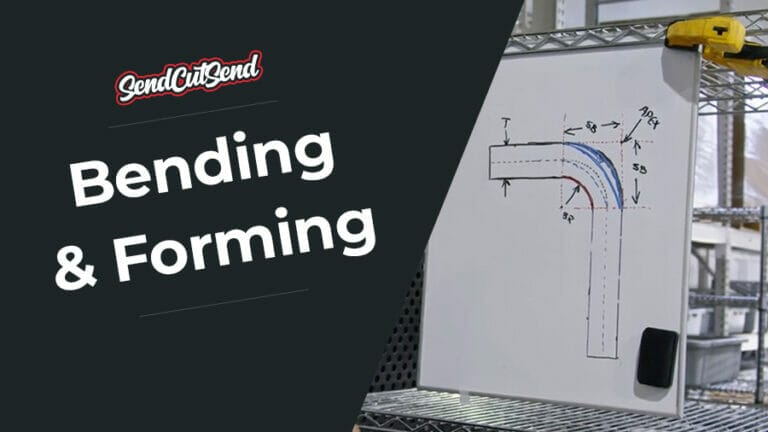One of the best ways to protect sheet metal from weathering is by coloring it with paint or powder coat. SendCutSend offers plenty of corrosion-resistant metals, like stainless steel and titanium, but other metals can be heavily negatively affected by long term outdoor use. While we always love a good bare metal look, and it’s perfectly fine for applications like sprockets, gears, and brackets, sometimes a little color is needed for that extra weathering protection.
But what type of protection is best? Powder coat or paint? It usually depends on the type of metal you’re using as well as the final application of the part, so knowing the difference between the two finishing processes will help you make an informed decision on what to use for your project.
Powder Coating vs. Painting: How Do Their Processes Differ?
Both powder coat and paint are protective coatings that provide aesthetic finishings, but that’s pretty much where the similarities end. The makeup of these two coatings and the application processes are vastly different.
Powder coating involves electrostatically applying a dry powder made of resin, pigments, and additives onto a substrate. The powder is attracted to the substrate’s surface due to an electrostatic charge, and then the coated object is heated in an oven. During the heating process, the powder melts and forms a durable, even, and highly adhesive coating. One of the key benefits of powder coating is its environmental friendliness, as it produces minimal volatile organic compounds (VOCs) and doesn’t require solvents. This process also results in a thicker and more uniform coating that exhibits excellent resistance to chipping, fading, and abrasion, making it ideal for industrial equipment, automotive parts, and outdoor furniture.
On the other hand, traditional painting involves the application of liquid paints onto a surface using brushes, rollers, or spray guns. The liquid paint consists of pigments, binders, solvents, and additives. When the paint is applied, the solvents evaporate, leaving behind a film of pigments and binders that adhere to the surface. Painting provides a wide range of color options, finishes, and textures, allowing for more artistic freedom and intricate detailing. However, compared to powder coating, painting might result in thinner and less uniform coatings. It can also produce more VOC emissions during application due to the use of solvents. While advancements in paint technology have led to more environmentally friendly options, certain applications still favor powder coating for its durability and eco-friendliness.
Powder Coat vs. Paint: Which One Is Better?
Choosing between powder coating and painting can be difficult if your project is well suited to both options. Let’s compare some of the basic aspects of each process to help make an informed decision on what’s best for your project:
Available colors
Painting affords almost boundless creativity when it comes to choosing colors for your project. Regardless of the material you’re painting, there are millions of color options available to pick from, with many available in the hardware store around the corner from your shop. If you’re looking purely for aesthetics and creativity, painting is the right choice here.
Although powder coating affords less room for a myriad of color choices, the ones available are vibrant and as long-lasting as the coating itself. Because powder coating is less susceptible to weathering and wear, your parts will stay looking almost brand new for years more than they would if they were painted. We have 7 color options available for powder coating here at SendCutSend with several different finishes.
- Matte Black: Axalta Black Magic 2 (0-9% Gloss)
- Gloss Black: Cardinal BK12 (90% Gloss)
- Texture Black: Cardinal BK176 (10% Gloss)
- Metallic Gray: Gun Metal 59/95726 (75% Gloss)
- Gloss Gray: 138/70046(RAL 7040) (87% Gloss)
- Gloss White: Tiger Bengal White RAL 9003 (90% Gloss)
- Gloss Blue: RAL 5010 (85% Gloss)
- Gloss Green: Emerald Green RAL 6001 (85% Gloss)
- Gloss Red: Cardinal RD03 (90% Gloss)
- Gloss Yellow: YL01 (90% Gloss)
Durability and Reliability
Painted sheet metal designs that are exposed daily to outdoor elements will need to be repainted every 2 to 4 years for long-term protection. Depending on where you live, you may need to repaint even more often than that as the paint will break down faster with extreme UV exposure. That’s a lot of time and money spent touching up chipped, worn, and flaking paint. Painting is also less capable of protecting the substrate from long term outdoor exposure, leaving your parts more susceptible to rusting and UV damage.
Powder coated sheet metal is a significantly more stable option for coloring outdoor and high use designs. When prepared correctly, powder coating can last an average of 20 years in direct UV exposure before needing to be redone, and with a little care, it can last even longer than that. Powder coating is also better suited to protecting the base metal of your part from exposure since the coating is thicker, denser, and provides its own sealing properties. This ensures that your parts themselves will stay looking great and working well even with constant long term use.
Texture
As long as your part has been well prepared, it’s relatively easy to achieve a smooth, glossy texture with paint if that’s what you’re seeking. Different types of paint will provide different textures so customizing the final look is as easy as picking up a spray can. For the sake of the texture and durability, it’s important to sand and clean your parts prior to painting as it’s easy for scratches, burrs, and debris to show up even under a coat of paint.
Powder coating textures are a little trickier to customize, but thanks to the thickness of the coating and well trained applicators, your part will come out the other side looking smooth and finished. All parts are deburred and chemically cleaned before going through our powder coating process, so any imperfections that may have appeared during the machining process will not be caught up during powder application.
Cost Efficiency
Painting is definitely the more accessible option, so for smaller scale projects, purchasing the necessary supplies is also relatively affordable. Whether you’re using a spray gun, liquid paint, or spray paint, most options are available in small and large quantities to fit a specific budget. The biggest cost downside to painting is the upkeep. Painted parts need to be cared for more than powder coated parts since they do not last as long with prolonged outdoor exposure or repeated use. You will need to sink a little more time and money to resanding and reapplying the finish with this option.
Powder coating is the outright more expensive option for finishing parts, although it gets more affordable as you scale up in project size. However, powder coating is, for the most part, a one-and-done deal. You don’t have to spend more time and money worrying about reapplications because the coating lasts for decades with no upkeep. With our online powder coating service, SendCutSend is also making powder coating more accessible, saving you time and money overall.
Safety and Eco-Friendly
Painting contains volatile organic compounds and solvents which are harmful to the environment and can cause damage with surface runoff. And when using spray paint, overspray can end up in groundwater and harm plant life if not done in the right environment. Inhaling overspray and fumes is also dangerous, so it’s important to wear the proper safety equipment.
Powder coating contains none of the VOCs that paint does, making it better for the environment. Surface runoff is also of no concern with powder coating because it contains no solvents. When it comes to the application process, it’s unsafe to inhale the powder. It’s best to go through a third party service for your powder coating needs as the operators are trained to go through the application process safely.
So, Is Powder Coating Better Than Paint?
Choosing between powder coating and paint ultimately depends on the individual needs of your project. It’s important to take budget constraints, time, durability requirements, and aesthetics all into account when picking between these two options. That being said, for the majority of projects, we see powder coating as being the best option overall.
One of the most notable advantages to powder coating lies in its unmatched durability and longevity. As we’ve mentioned, powder coated surfaces have exceptional resistance to weathering, impacts, and abrasions, far surpassing the capabilities of painted surfaces. This durability translates into extended lifespan, as powder coating can endure for up to two decades or more under direct UV exposure without requiring a refresh. In contrast, painted surfaces often demand frequent repainting every few years due to chipping, flaking, and wear, making powder coating a more sustainable and cost-effective choice over the long term.
Powder coating offers enhanced protection against corrosion and environmental elements. The dense, thick nature of the powder coating provides a robust barrier that shields the underlying material from moisture, chemicals, and corrosive agents. This level of protection is challenging to achieve with traditional paint, which is prone to cracking and allowing moisture to reach the substrate, leading to rust and degradation.
Powder coating’s environmental and safety benefits further contribute to its superiority to painting. Containing no VOCs or harmful solvents, the application process for powder coating is also safer as it’s done in a controlled environment by trained professionals. Overall, the reduced environmental impact and enhanced safety profile position powder coating as a responsible and forward-thinking finishing method.
Ordering Custom Powder Coated Sheet Metal Online
It’s never been easier to order custom powder coated parts. When you upload your design to our website, you can simply select powder coating for your part, as well as the color you want applied to it. Powder coated parts must be larger than 3” and no single dimension can be larger than 36”. At this time, we do not offer tab removal on powder coated parts. This means that micro joints and tabs may be visible through the powder coating. Tabs are typically 0.015-0.030″ in width (depending on the material) and about 0.010″ in height.
Powder coating can directly benefit many of your custom laser cut projects, providing both protection and aesthetics where the substrate would otherwise be left exposed to the elements. So give your parts the finish they deserve and get instant pricing on your powder coated sheet metal today!
FAQs About Powder Coat and Paint
Does powder coat scratch easy?
Powder coating can be dented and scratched, but it protects the substrate from further surface level wear and tear. Powder coated cannot be scratched as easily as painting can.
Is powder coat better for the environment?
Powder coating is one of the better aesthetic and protective finishes when it comes to being environmentally cautious. The lack of volatile organic compounds (VOCs) and solvents prevents dangerous runoff and releasing harmful particles into the air. Overspray from powder coating can also be collected and recycled, unlike with paint.
